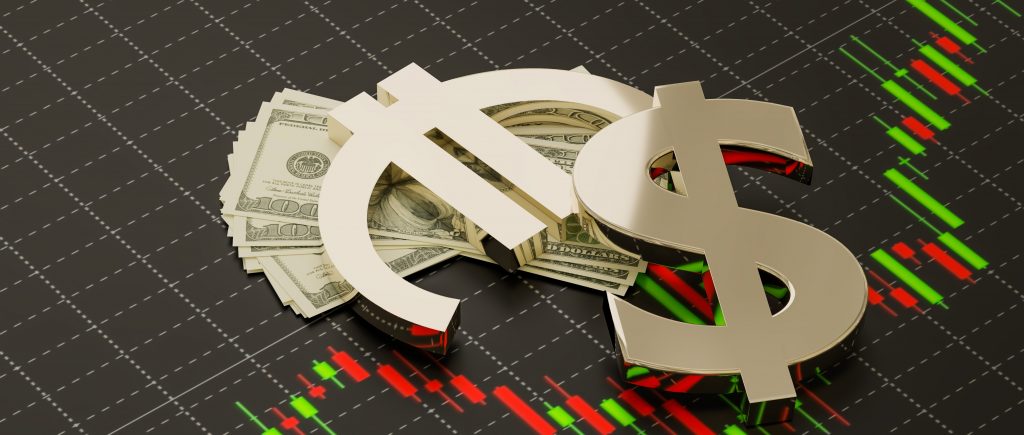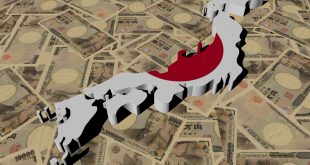The US dollar’s strength continues on Tuesday despite the declining Manufacturing PMI data. On the other hand, the Euro extends its losses as a reaction to Germany’s inflation data. So far, the dollar recovered and reached fresh two-week highs, although T-yields retreated.
The US Dollar Index climbs close to 1%, at 104.522, and is impacting the EUR/USD’s fall. Contrarily, the US 10-year Treasury bond yield remains down in the day, trimming its earlier losses, slightly down four bps, at 3.792%, stalling the US dollar rally.
Dented by moderating inflation data, the Euro falls against the dollar during the US session after hitting a daily high of 1.0683, but it has trimmed some of its earlier losses after reaching a six-week low at around 1.0519.
Data from the United States and the Eurozone showed factory activity weakening on both sides, though the US dollar is emerging with the upper hand. Hence, the EUR/USD is trading at 1.0558 below its opening price by 0.99% on the day. At the time of writing the pair is trading at 1.0547. In other words, European price pressures eased in December, indicating national inflation may also have slowed for a second month due in part to the government’s one-off payment of household energy bills.
Wall Street extended its losses to reflect a diminished market sentiment. S&P Global revealed that Manufacturing PMI for December in the US was unchanged at 46.2, remaining in contractionary territory. Although data was negative for the US dollar, the EUR/USD continued to remain in negative territory.
The manufacturing sector posted a weak performance as 2022 was brought to a close, as output and new orders contracted at sharper rates. Demand for goods dwindled as domestic orders and export sales dropped. Muted demand conditions also led to downward adjustments of stock holdings.
In the Eurozone, the economic calendar revealed the mixed S&P Global Manufacturing PMIs for December, which traders mainly ignored. On Tuesday, inflation in Germany for December, as measured by the Consumer Price Index (CPI), decelerated to 8.6% YoY vs. November’s 10% figure and beneath 9% estimates. Concerning the monthly reading, CPI dropped 0.8%.
The Harmonized Index of Consumer Prices (HICP), the European Central Bank’s (ECB) preferred gauge of inflation, edged lower to 9.6% YoY, from 11.3%, compared to analysts’ estimate of 10.7%.
The US economic calendar will feature the ISM Manufacturing PMI for December alongside the FOMC minutes. On the EU side, the docket will feature S&P Global Services and Composite PMIs for December.
Investors will watch for signs of how concerned the Fed is about persistent inflation and its thoughts on the labour market, though the meeting minutes may not be as market moving as upcoming jobs and inflation data.
A still robust employment picture is viewed as giving the Fed more room to keep raising rates as it battles to bring down stubbornly high inflation. The highly anticipated December jobs report is due on Friday, and consumer price data for last month will be released on January 12.
Data on Tuesday showed that US construction spending unexpectedly rebounded in November, lifted by gains in nonresidential structures, but single-family homebuilding continued to be hammered by higher mortgage rates. The dollar seems to have received a push forward from safety buying after data earlier showed that China’s factory activity shrank at a sharper pace in December as surging COVID-19 infections disrupted production and weighed on demand.
Technically; from a daily chart perspective, the EUR/USD pair shifted to a neutral biased after dropping below the 20-day Exponential Moving Average (EMA) at 1.0582. However, the intersection of two trendlines, nearby Tuesday’s daily low of 1.0519, capped the Euro’s fall, which recovered to the 1.0550s area. Nevertheless, surpassing the 20-day EMA would be difficult, and with fundamental news lurking on Wednesday’s docket, the EUR/USD might seesaw in the near term.
The EUR/USD key resistance levels are 1.0600, followed by the 2020 yearly low of 1.0636 and 1.0700. On the flip side, the EUR/USD first support would be 1.0519, followed by the 1.0500 mark. Break below will expose the 200-day EMA at 1.0428.
The strong start to the new calendar year for the dollar is very much in keeping with long term seasonal trends which typically see the dollar rally in January; its strongest month of the year over the past 25 years.

 Noor Trends News, Technical Analysis, Educational Tools and Recommendations
Noor Trends News, Technical Analysis, Educational Tools and Recommendations




